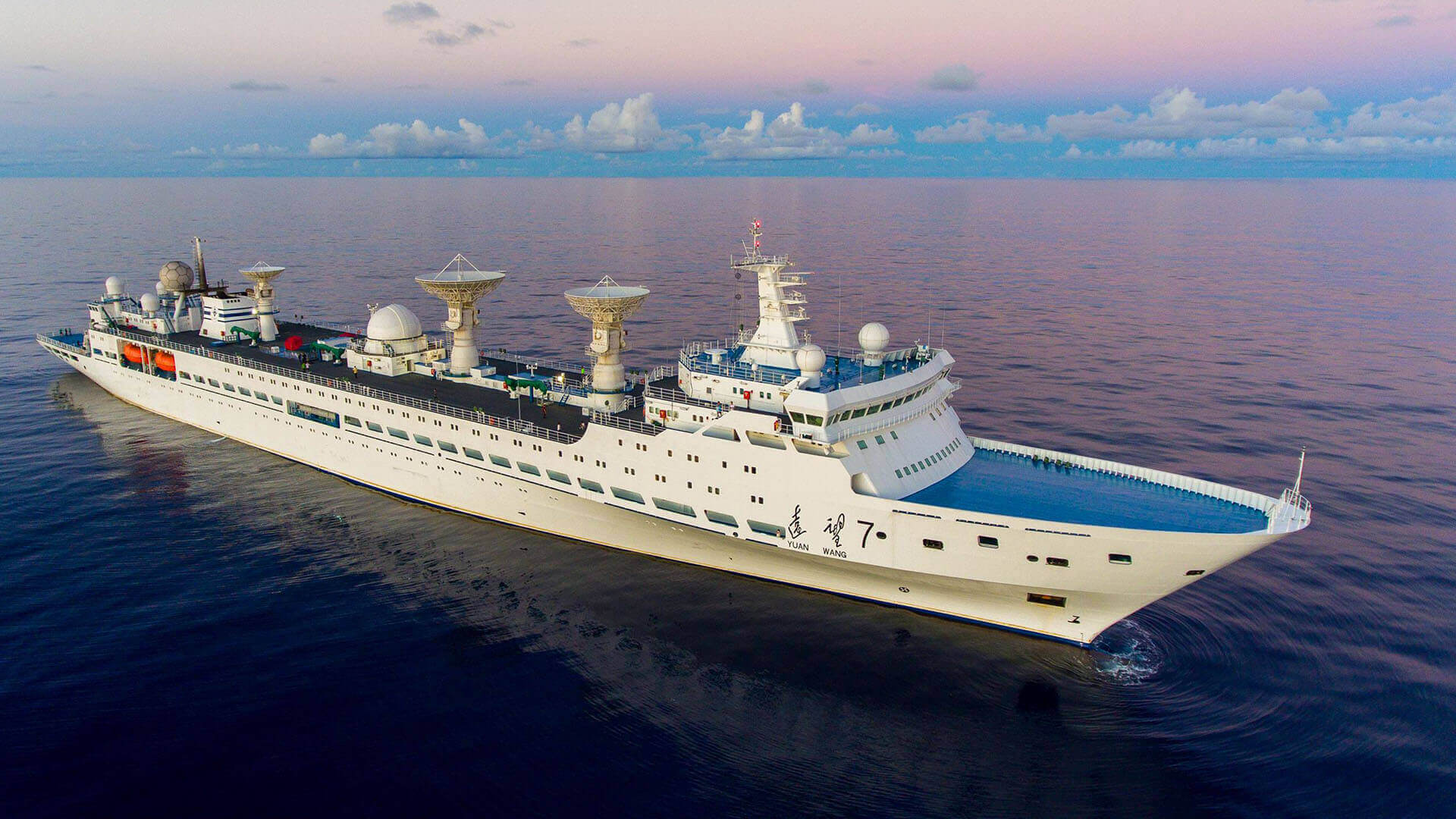Chinese state-owned media outlet Global Times (GT) described India’s plan to block spy vessel Yuan Wang 6 from entering its Exclusive Economic Zone (EEZ) as unbefitting of a “mature world power.”
Referring to the ship as a “research and survey vessel” and rejecting claims that it is a “spy vessel,” GT declared that India’s move hinders the “rebuilding of mutual trust” in bilateral relations, violates laws and conventions, and suppresses China’s “legitimate scientific research activities.”
Qian Feng, the director of the research department at the National Strategy Institute at Tsinghua University, said that India’s “vigilance” has exposed its “lack of confidence in dealing with China.” He stressed that the Yuan Wang 6 is not a “military vessel” and that its passage is “totally normal and legitimate.”
The GT article comes amid Indian media reports citing defence officials declaring that the Naval Forces will not allow the Chinese “spy vessel” to enter India’s EEZ, which extends to 200 nautical miles from the Indian coastline.
#AreaWarning #India issues a notification for a no fly zone over the Bay of Bengal region indicative of upcoming missile test
— Damien Symon (@detresfa_) October 22, 2022
Launch Window | 10 - 11 Nov 2022 pic.twitter.com/XqXVR2j9Y3
The Economic Times said that it is a “known fact” that Yuan Wang 6 has been deployed to the Indian Ocean Region to monitor India’s missile tests at the APJ Abdul Kalam island near the Odisha coast.
The vessel’s movement towards India’s EEZ coincides with New Delhi releasing a Notice to Airmen regarding its plan to test its new AF-1 interceptor missile for Phase II of its indigenous two-tier ballistic defence missile, which has a range of 2,2000 kilometres, on 10 and 11 November. The airspace in the region between India and Sri Lanka and Indonesia has been blocked in anticipation of the test.
A senior defence official revealed the vessel will not travel to any port and will be deployed in “open seas.” He said India’s surface and sub-surface assets, Unmanned Aerial Vehicles, and a long-range maritime surveillance aircraft are “constantly monitoring” the vessel’s movement.
“Though we can’t do anything till she is in the open seas, action can be taken once she attempts to enter our EEZ. Had she been a normal PLAN warship, we could have done nothing due to the international right to passage laws,” he added.
The @DRDO_India conducted a successful maiden flight-test of Phase-II Ballistic Missile Defence (BMD) interceptor AD-1 missile with a large kill altitude bracket from APJ Abdul Kalam Island off the coast of Odisha, today.
— A. Bharat Bhushan Babu (@SpokespersonMoD) November 2, 2022
Read here for more:
https://t.co/ohCsAFLD8k pic.twitter.com/XYd70BTHWG
According to international maritime laws and practices, foreign vessels can freely transit through EEZs. However, Indian laws prohibit any research or exploration activities in its EEZ without prior permission.
However, defence officials have warned that India’s ability to block the Yuan Wang 6 from entering its EEZ could be hampered if its maritime neighbours, Bangladesh and Sri Lanka, permit the Chinese vessel to enter their territorial waters and dock at their ports, as this would allow the Chinese ship to position itself in areas close to India’s coast with no recourse for India.
The Chinese vessel left Jiangyin port in China on 21 October and entered the Indian Ocean region through the Lombok Straits on 4 November. It is currently off the coast of Bali.
Against this backdrop, India also began its second Naval Commanders’ Conference in New Delhi on 31 October, with a focus on Chinese maritime activities.
Meanwhile, on Saturday, India’s naval chief met with representatives of the Quad – Japan, Australia, and the United States – in Tokyo. The meeting focussed on increasing surveillance activities in the Indo-Pacific by Chinese and Russian ships. The quartet are also preparing for the ten-day Malabar 2022 exercise beginning today; it will see the participation of warships from all four countries.
Chinese spy vessel Yuan Wang 5 docks at Sri Lankan port of Hambantota this morning. pic.twitter.com/hkO5N8suJ7
— Sidhant Sibal (@sidhant) August 16, 2022
India’s concerns about Chinese research vessels are not unprecedented. In 2019, the Indian Navy blocked Chinese ‘research’ vessel Shi Yan 1 from entering its EEZ near the Andaman and Nicobar Islands.
India also raised concern about Sri Lanka allowing China’s Yuan Wang 5 to dock at the Hambantota Port in August. In response, Sri Lanka asked China to postpone the scheduled visit indefinitely. Nevertheless, the vessel docked at the Hambantota Port with a week’s delay.
Despite its description of being a research vessel, it is believed that such research exercises are also a guise to increase maritime surveillance and gather intelligence. The Yuan Wang 5, for example, is a dual-purpose spy ship that Beijing utilises for space and satellite tracking and with specific usage in intercontinental ballistic missile launches.
Like India, Japan, too, is concerned by a Chinese research vessel that is inching closer to its territorial waters and even entered Japanese territorial waters near Kuchinoerabu Island on 2 November. Japan has protested the Chinese vessel’s passage through the Gaja Island region.
Similarly, a Chinese naval as found sailing in Japan’s contiguous waters along its coastline in the China-claimed Senkaku Islands in July, marking the first time since 2018 that a military vessel was spotted in the area.

